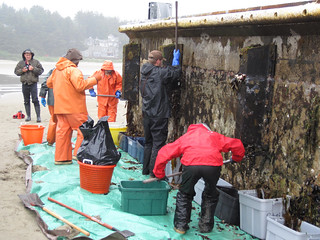 TILLAMOOK – Hypoxia and ocean acidification get a lot of press, but how many people know what these phenomena are, what causes them and what they mean for marine species and coastal communities? Now’s the chance to find out, in an Oct. 23 public forum that aims to take some of the mystery out of the science behind measuring, understanding and minimizing the effects of of these ocean conditions.
TILLAMOOK – Hypoxia and ocean acidification get a lot of press, but how many people know what these phenomena are, what causes them and what they mean for marine species and coastal communities? Now’s the chance to find out, in an Oct. 23 public forum that aims to take some of the mystery out of the science behind measuring, understanding and minimizing the effects of of these ocean conditions.
The forum, starting at 6:30 pm in rooms 214-215 at Tillamook Bay Community College, 4301 3rd St., is free and open to the public. Pre-registration is encouraged, but not required. For more information, visit the PISCO Website.
Organized by the Partnership for Interdisciplinary Studies of the Ocean (PISCO) and Oregon Sea Grant, the forum will focus on cutting edge research by scientists from many disciplines, and how resource managers and industries are responding. A series of speakers will address:
- The definitions of ocean acidification and coastal hypoxia, and how they are related – Francis Chan, OSU Zoology/PISCO
- Why this is happening off our coast and what makes Oregon vulnerable – Burke Hales, OSU College of Earth, Ocean and Atmospheric Sciences (CEOAS).
- How scientists are monitoring the ocean for these changes – Jack Barth (CEOAS/PISCO)
- The impacts of acidification on shellfish hatcheries – Alan Barton (Whiskey Creek Shellfish Hatchery)
Speakers will be followed by a question-and-answer panel featuring scientists and representatives of the Oregon Department of Fish and Wildlife and the National Oceanic and Atmospheric Administration.
The event is hosted by PISCO through funding from Oregon Sea Grant.






